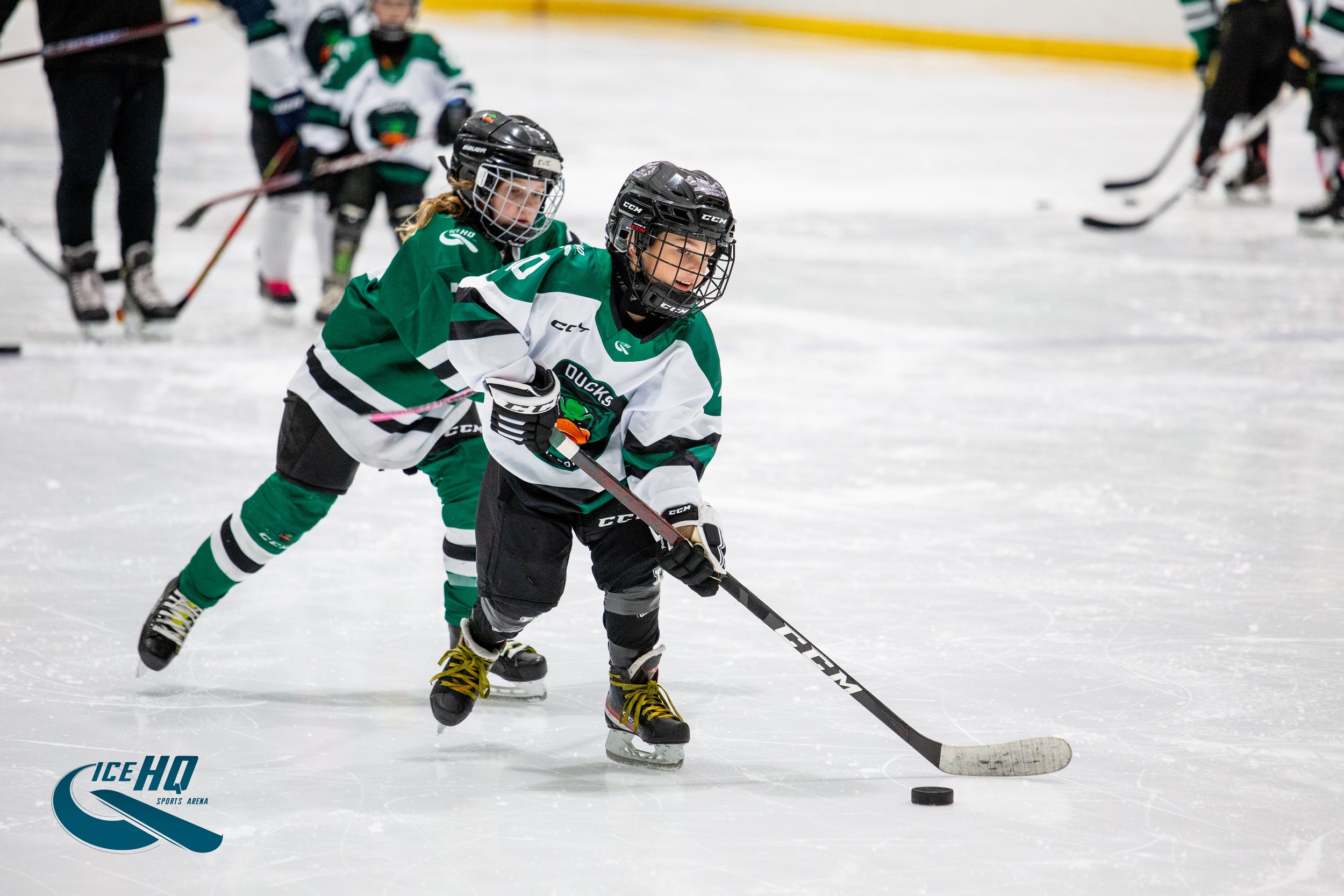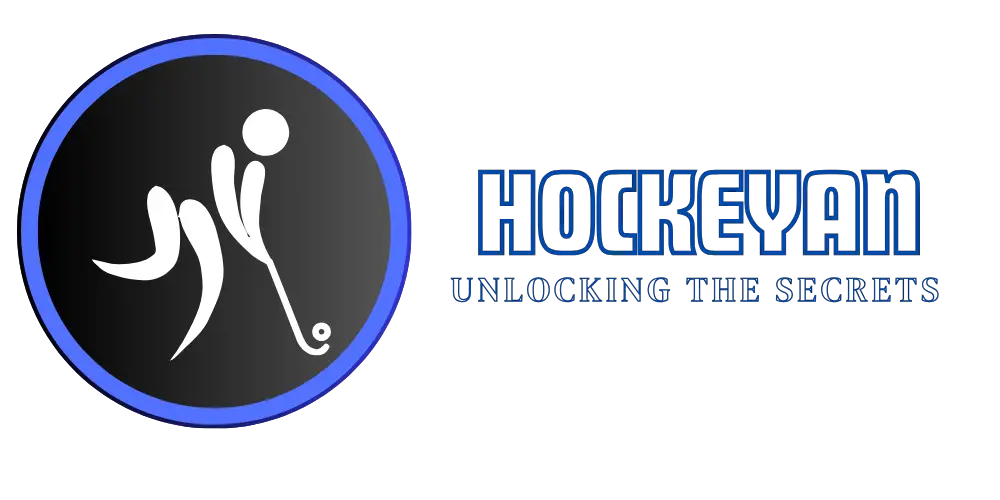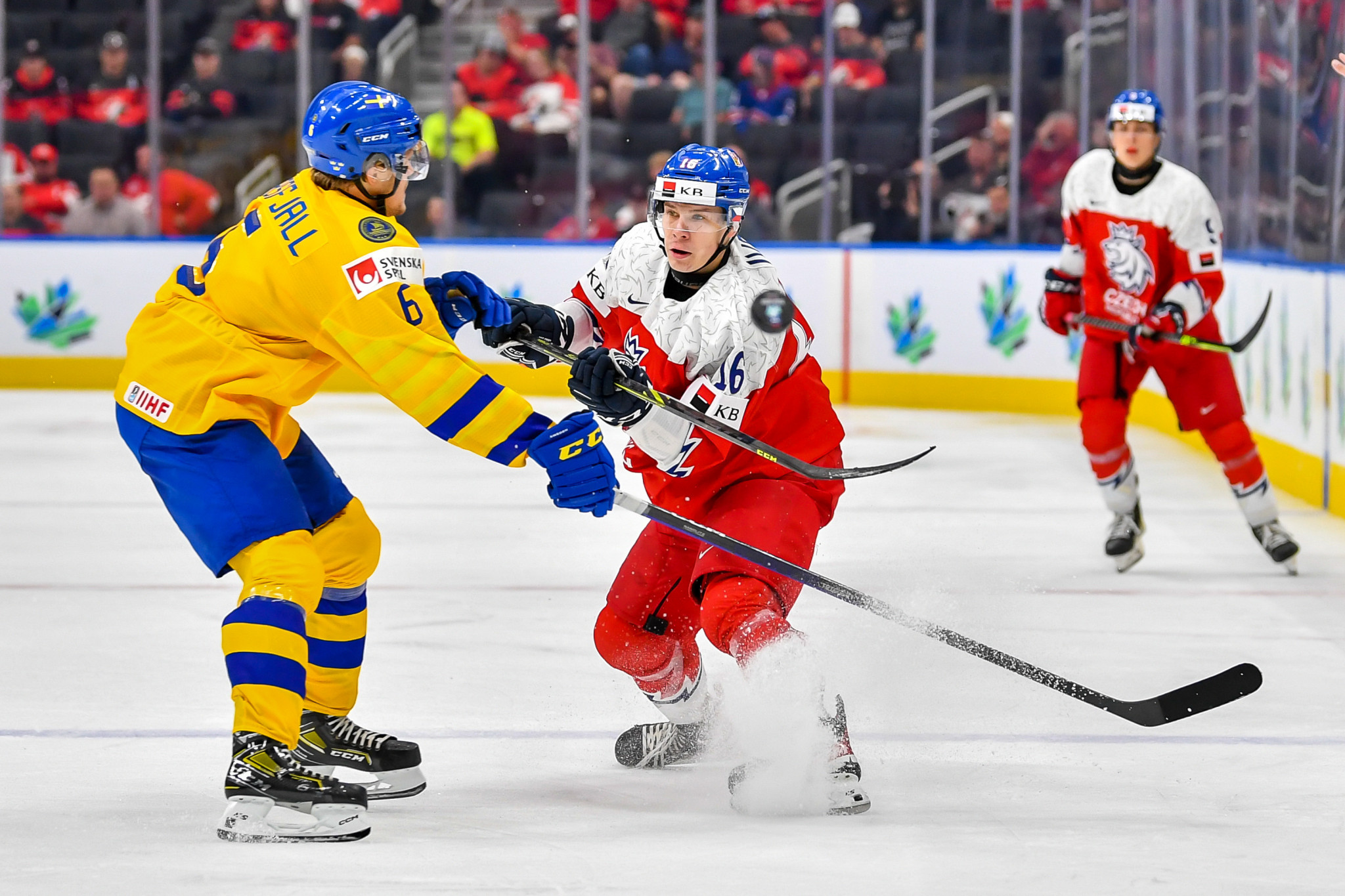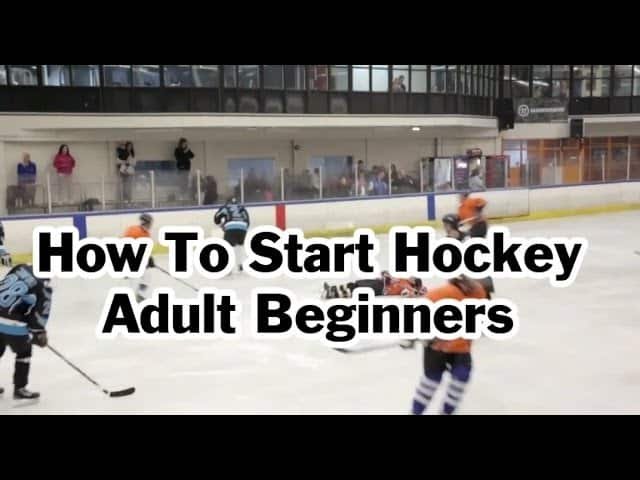Junior Ice Hockey is a sport for young players, typically under 20 years old. It helps develop skills and teamwork.
Junior Ice Hockey is a thrilling and competitive sport designed for young athletes. Children and teens, usually under 20, engage in fast-paced games that enhance their physical fitness and strategic thinking. This sport encourages teamwork, discipline, and sportsmanship among young players.
Ice hockey leagues and clubs provide structured environments where kids can train and compete. Many players aspire to join professional leagues, making junior hockey a crucial stepping stone. Parents and coaches play vital roles in supporting and guiding these young talents. Junior Ice Hockey fosters athletic growth and builds lifelong skills and friendships.

Credit: www.dpreview.com
Introduction To Junior Ice Hockey
Junior ice hockey is a fun and exciting sport for kids. It helps them learn teamwork, discipline, and physical fitness. Let’s dive into the basics and benefits of starting young.
The Basics
Junior ice hockey is for kids under 18. The game involves two teams, each with six players. The aim is to score goals by hitting a puck into the opponent’s net. Players wear special gear to stay safe.
- Helmet with face cage
- Chest protector
- Elbow pads
- Gloves
- Shin guards
- Skates
- Stick
Games are played on an ice rink. Each game has three periods, each lasting 20 minutes. Coaches guide kids through practices and games. They teach skills like skating, passing, and shooting.
Why Start Young
Starting ice hockey young has many benefits. Kids develop strong bodies and minds. They learn to work as a team and make friends. Playing hockey improves balance, coordination, and agility.
| Benefit | Description |
|---|---|
| Physical Fitness | Builds strength, speed, and endurance. |
| Social Skills | Encourages teamwork and friendship. |
| Mental Toughness | Teaches discipline and focus. |
Kids who start young often excel in other sports too. The skills they learn in hockey help in school and life. Junior ice hockey is a great way to stay active and have fun.
Essential Gear
Junior ice hockey is a thrilling sport for young athletes. To ensure safety and performance, having the right gear is crucial. This guide highlights the essential gear needed for junior ice hockey players.
Safety Equipment
Safety is the top priority in junior ice hockey. Proper safety equipment can prevent injuries and keep young players safe on the ice.
- Helmet: The helmet must fit snugly and have a face cage.
- Mouth Guard: Protects teeth and reduces risk of concussions.
- Shoulder Pads: Provides protection for shoulders, chest, and back.
- Elbow Pads: Shields elbows from impacts during falls and collisions.
- Gloves: Protect hands and fingers while providing grip on the stick.
- Shin Guards: Covers shins and knees, preventing injuries from pucks and sticks.
- Skates: Properly fitted skates ensure stability and speed on the ice.
Choosing The Right Stick
The hockey stick is a key piece of equipment. It must be the right size and weight for the player.
| Factor | Description |
|---|---|
| Length | The stick should reach the player’s chin on skates. |
| Flex | Younger players need a lower flex rating for better control. |
| Blade Curve | Choose a blade curve that matches the player’s shooting style. |
Always check the stick’s grip. A good grip helps with control and handling.
Ensure the stick’s weight is manageable for the young player. A heavy stick can tire them quickly.
Fundamental Skills
Junior ice hockey is an exciting and challenging sport. To excel, young players must master fundamental skills. These skills include skating techniques and stickhandling basics. Each skill is crucial for success on the ice.
Skating Techniques
Skating is the foundation of ice hockey. Players need to learn proper stance and balance. The stance should be low, with knees bent and weight centered. This helps with stability and speed.
Edge control is another important skill. Skaters use the inside and outside edges of their skates. This helps them turn, stop, and change direction quickly. Practicing edge drills can improve this skill.
| Drill | Purpose |
|---|---|
| Forward Swizzles | Improve forward movement |
| Backward Crossovers | Enhance backward skating |
| Inside Edges | Better turning control |
Stickhandling Basics
Stickhandling allows players to control the puck effectively. Good stickhandling starts with the correct grip. Players should hold the stick with their top hand near the end and the bottom hand lower on the shaft.
Keeping the puck close is crucial. Players should practice dribbling the puck with their heads up. This helps them see the ice and make better decisions.
Here are some basic stickhandling drills:
- Figure 8s: Move the puck in a figure 8 pattern around cones.
- Toe Drags: Pull the puck back using the toe of the stick.
- Quick Hands: Rapidly move the puck side to side.
Mastering these fundamental skills can make a big difference in a young player’s game. Consistent practice and attention to detail help players improve and enjoy the sport more.
Training Drills
Training drills are essential for junior ice hockey players. They help players improve their skills, speed, and agility. Both on-ice and off-ice exercises play a significant role in a player’s development.
On-ice Drills
On-ice drills focus on skating, puck handling, and shooting. These drills help players become more confident on the ice.
- Skating Drills: Skating is the foundation of ice hockey. Practice forward and backward skating, crossovers, and stops.
- Puck Handling: Use cones to create obstacle courses. Practice stickhandling around the cones.
- Shooting Drills: Practice wrist shots, slap shots, and backhand shots. Aim for different parts of the net.
Regular practice of these drills improves the player’s overall performance on the ice.
Off-ice Exercises
Off-ice exercises are crucial for building strength and endurance. These exercises help players stay in top shape even when they are not on the ice.
| Exercise | Benefit |
|---|---|
| Squats | Builds leg strength and stability |
| Push-Ups | Improves upper body strength |
| Planks | Strengthens the core muscles |
Incorporating these off-ice exercises into the training routine enhances the player’s physical fitness.
Developing Game Sense
Developing game sense is crucial in junior ice hockey. It enables young players to make smart decisions. This skill helps in reading the play and positioning effectively.
Reading The Play
Reading the play involves understanding the game flow. Players must anticipate opponents’ moves. This helps in staying one step ahead.
Here are some tips to improve reading the play:
- Watch the puck: Always keep an eye on the puck.
- Observe opponents: Notice how opponents move.
- Communicate: Talk to teammates constantly.
Positioning Tips
Good positioning is key in hockey. It ensures you are in the right place. This boosts your chances of winning the game.
Follow these positioning tips:
- Stay between the puck and the net: Always protect your goal.
- Keep your stick on the ice: This helps in intercepting passes.
- Maintain a balanced stance: This allows quick movements.
Developing game sense requires practice. Using these tips, young players can improve their game sense. This will make them better hockey players.

Credit: www.facebook.com
Team Dynamics
Understanding Team Dynamics is crucial in junior ice hockey. It shapes how young players interact and perform together. This foundation helps in building a strong, cohesive team. Let’s dive into the key aspects of team dynamics.
Effective Communication
Effective communication is vital for any successful team. Players must talk clearly and listen actively. Coaches should encourage open dialogues. This helps in reducing misunderstandings.
Using simple, clear words can make a big difference. Younger players benefit from easy instructions. For example, “Pass the puck” is more effective than a long, complicated sentence. Non-verbal cues, like hand signals, also play an important role.
| Communication Type | Importance |
|---|---|
| Verbal | Essential for strategy and playmaking |
| Non-verbal | Useful for quick decisions during the game |
Building Team Chemistry
Building team chemistry involves more than just playing together. It’s about understanding each other’s strengths and weaknesses. Trust is built on and off the ice.
Team activities outside the rink can foster better relationships. Simple things like team dinners or group games can make a difference. These activities help players know each other better.
- Team Dinners
- Group Games
- Shared Goals
Shared goals also bring players closer. A common objective gives everyone something to strive for. This unity translates into better performance on the ice.
Balancing School And Hockey
Junior ice hockey players face the unique challenge of balancing their love for the sport with their academic responsibilities. Striking the right balance ensures they excel both on the ice and in the classroom. Here, we explore effective strategies for managing school and hockey commitments.
Time Management
Effective time management is crucial for junior hockey players. They need to divide their day wisely to meet both academic and athletic requirements.
- Create a daily schedule.
- Include time for homework, practice, and rest.
- Use a planner to track assignments and games.
Setting aside specific times for homework can help. This ensures that schoolwork gets done without last-minute stress.
Practice sessions should also be scheduled. Knowing when practice starts and ends helps in planning the rest of the day.
Prioritizing Commitments
Prioritizing commitments is another essential skill. Junior hockey players must learn to balance their schoolwork and hockey.
- Identify the most important tasks each day.
- Complete school assignments before heading to the rink.
- Communicate with teachers about your hockey schedule.
By prioritizing commitments, players ensure they meet their academic goals. This approach also helps in staying organized.
It is vital to communicate with coaches and teachers. Letting them know about your dual commitments can lead to better support.
Balancing school and hockey is challenging but achievable. With strong time management and prioritization, junior players can succeed in both areas.
Mental Preparation
Junior Ice Hockey is not just about physical skills. Mental preparation is equally vital. Young players need to build confidence and learn to handle pressure. This helps them perform better on the ice and enjoy the game more.
Building Confidence
Confidence is key in junior ice hockey. Players who believe in themselves perform better. Here are some ways to build confidence:
- Positive Self-Talk: Encourage players to use positive words about themselves.
- Set Achievable Goals: Small goals help players see progress.
- Practice Regularly: More practice leads to better skills and more confidence.
Handling Pressure
Pressure can be tough for young players. Learning to handle it is crucial. Here are some tips:
- Breathing Exercises: Deep breaths can calm nerves.
- Stay Focused: Teach players to focus on their game, not the score.
- Support System: Family and coaches should offer positive support.
By building confidence and handling pressure, junior ice hockey players can enjoy the sport and perform their best.
Pathways To Progression
Junior ice hockey offers multiple pathways for young players to progress. These pathways provide structured environments for development. They also help players improve their skills and gain experience.
Youth Leagues
Youth leagues are the first step in a player’s journey. They offer a competitive yet nurturing environment. Players learn the basics of the game and teamwork.
Youth leagues usually have different age groups. This ensures players compete with others of similar skill levels. Common age groups include:
- Under-8
- Under-10
- Under-12
- Under-14
Coaches focus on fundamental skills. This includes skating, puck handling, and shooting. Youth leagues also emphasize sportsmanship and discipline.
Advanced Training Camps
Advanced training camps offer more specialized coaching. These camps often feature experienced coaches and former professional players.
Participants receive intensive training. This can include drills, scrimmages, and off-ice conditioning. Camps usually last for a few days to a week.
Key elements of advanced training camps include:
- Individual Skill Development
- Position-Specific Training
- Video Analysis
- Fitness and Nutrition Guidance
Advanced camps help players refine their skills. They prepare young athletes for higher levels of competition. Many players also gain valuable exposure to scouts.
Both youth leagues and advanced camps are crucial for player development. They provide the necessary foundation and advanced skills for future success.
Parental Support
Parental support is crucial for young ice hockey players. It helps them grow and enjoy the sport. Parents can make a big difference in their child’s hockey journey.
Encouraging Participation
Encouraging participation is important for young players. Parents should show interest in their child’s games and practices. This makes kids feel proud and motivated.
- Attend games and cheer for your child.
- Ask about their practices and what they learned.
- Provide positive feedback and praise their efforts.
Supportive parents help kids love the sport. They stay excited and want to improve.
Providing Emotional Support
Emotional support helps kids deal with the ups and downs. Parents should listen and be there for their child.
Here are some ways to provide emotional support:
- Listen to their feelings after a game.
- Encourage them when they feel down.
- Celebrate their achievements, big or small.
Kids need to know that their parents care. It helps them feel confident and happy.

Credit: www.icehq.com.au
Frequently Asked Questions
What Is Junior Ice Hockey?
Junior ice hockey is for young players, typically aged 16-21. It helps develop their skills and prepare for higher levels.
How Long Is A Junior Ice Hockey Game?
A junior ice hockey game usually lasts about 60 minutes. It is divided into three 20-minute periods.
What Equipment Is Needed For Junior Ice Hockey?
Players need skates, a helmet, pads, gloves, and a stick. Proper protective gear is essential for safety.
How To Join A Junior Ice Hockey Team?
To join, contact local hockey associations. They often have tryouts and registration processes for new players.
Conclusion
Junior ice hockey offers young athletes a chance to develop skills and enjoy teamwork. It’s a sport that builds character and resilience. Parents and coaches play key roles in nurturing talent. Encourage your child to lace up and hit the ice.
The benefits of junior ice hockey are countless and lasting.




